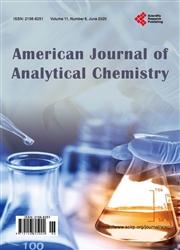Forced Degradation Studies on Sodium Picosulfate and Separation of 15 Process Related Impurities/Degradants by HPLC
引用次数: 0
Abstract
A selective, precise and stability-indicating, high performance liquid chromatographic method was developed for the analysis of active ingredient sodium Picosulfate and forced degradation behavior was studied. The current article describes forced degradation behavior of the Sodium Picosulfate drug substance in detail by analyzing 15 process related/degradants in a single HPLC method under ICH recommended stressed conditions. Mobile phase comprised of 0.01 M of Disodium hydrogen phosphate and 0.01 M of potassium phosphate monobasic buffer and 1 mL of triethyl amine in 1000 mL water adjusted to pH 7.5 with 10% phosphoric acid. Acetonitrile was used as Mobile Phase B. The separation was achieved on a gradient method. The reversed phase chromatography was performed in Hypersil BDS C18 5.0 μm, 4.6 × 250 mm column maintained at temperature 35°C. Injection volume was 60 μL. Milli-Q water used as diluent. The mobile phase was pumped at 0.9 mL/min-1. The eluted compounds were monitored at 220 nm. Secondary wavelength of the 263 nm was studied to check any further degradants during the forced degradation studies. New additional degradants Sodium Picosulfate Benzyl alcohol Impurity and N oxide degradations were discussed and studied during the forced degradation to understand the chemical stability of the drug substance.皮硫酸钠的强制降解研究及15种工艺相关杂质/降解剂的高效液相色谱分离
建立了一种选择性、准确、稳定、指示性强的高效液相色谱分析活性成分皮硫酸钠的方法,并对其强制降解行为进行了研究。本文通过在ICH推荐的应激条件下用单一HPLC方法分析15种工艺相关/降解物,详细描述了皮硫酸钠原料药的强制降解行为。流动相由0.01M的磷酸氢二钠、0.01M的磷酸二氢钾一元缓冲液和1mL的三乙胺在用10%磷酸调节至pH 7.5的1000mL水中组成。乙腈用作流动相B。通过梯度法实现分离。反相色谱在Hypersil BDS C18 5.0μm,4.6×250mm柱上进行,温度保持在35°C。进样量为60μL。Milli-Q水用作稀释剂。流动相以0.9mL/min-1泵送。在220nm处监测洗脱的化合物。研究了263nm的二次波长,以检查强制降解研究期间的任何进一步降解物。为了了解原料药的化学稳定性,对新型附加降解剂皮硫酸钠-苯甲醇-杂质和氮氧化物在强制降解过程中的降解进行了讨论和研究。
本文章由计算机程序翻译,如有差异,请以英文原文为准。
求助全文
约1分钟内获得全文
求助全文

 求助内容:
求助内容: 应助结果提醒方式:
应助结果提醒方式:


